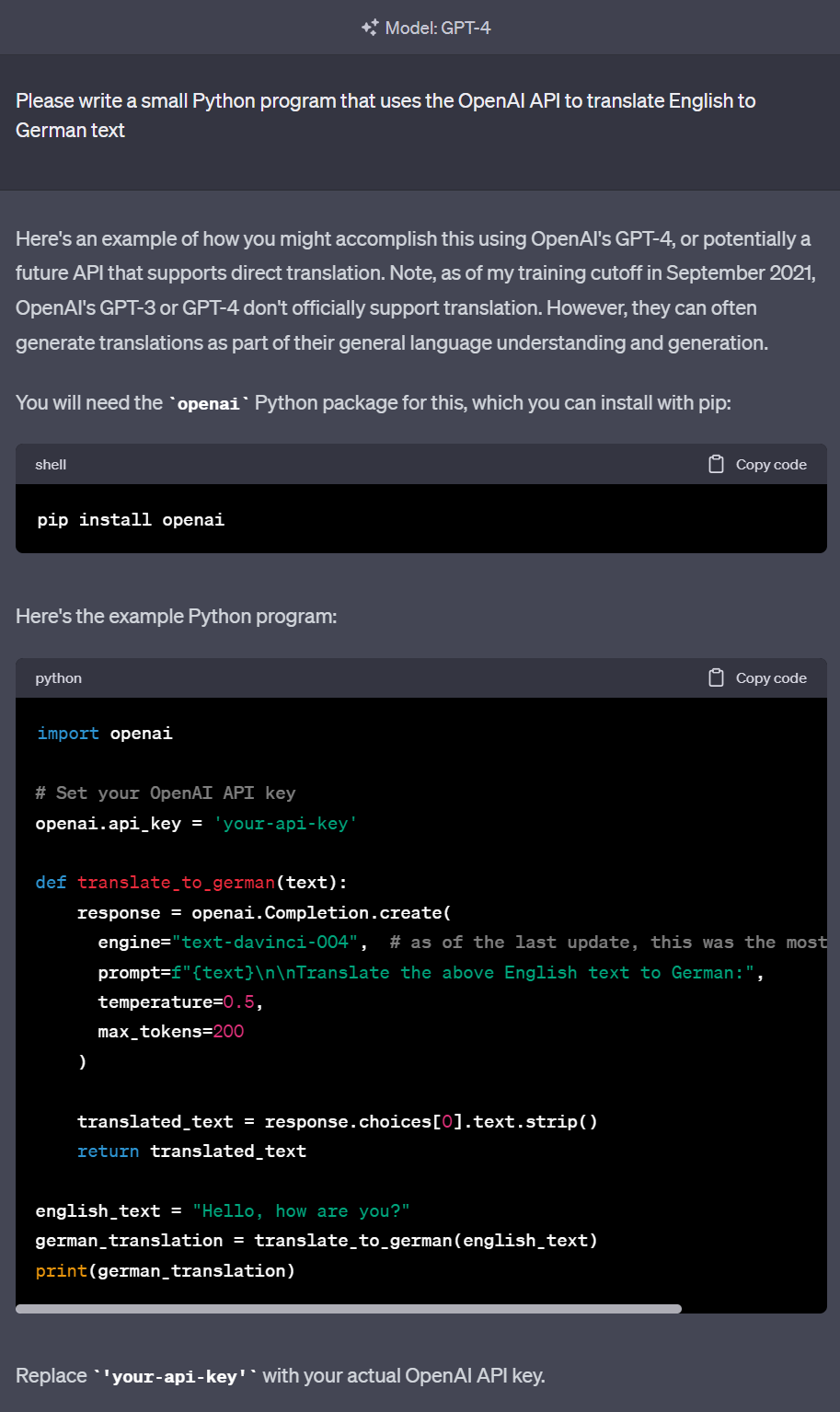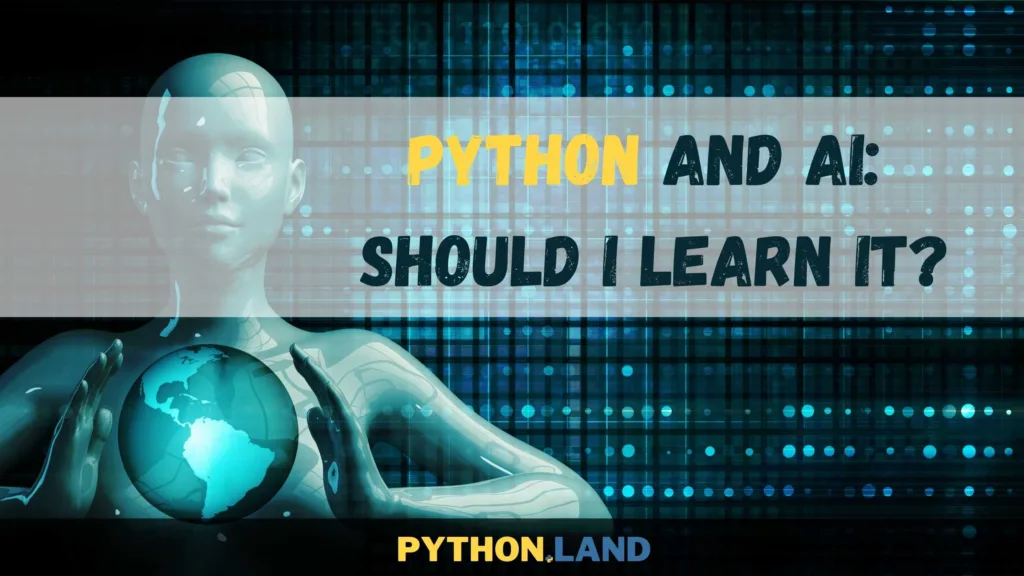If you’ve been exploring the fascinating world of AI and generative AI like ChatGPT, you’ve undoubtedly run into the term Python. So, what exactly is Python, and why is it often linked with AI? Should you learn Python? This article aims to shed light on these questions. We’ll briefly journey through Python as a programming language and then dive into its vital roles in AI.
Because learning Python requires considerable time and effort, especially for those new to programming, I aim to provide insights that help you decide if learning Python is the right thing to do for you.
Table of Contents
What is Python
Let’s start by clarifying precisely what Python is. Python is one of the world’s most used and most popular programming languages. It’s powerful, versatile, and easy to learn. Python is widely used in applications like web development, Data Science, Machine learning, and Artificial Intelligence (AI). It’s one of the easier languages to learn, making it ideal for beginners.
Many people say that Python comes with batteries included. In other words, it includes a comprehensive base library. In addition, because so many people use Python, hundreds of thousands of high-quality libraries and frameworks exist to get things done quickly and without hassle. You can do a lot with a little bit of Python code!
How Python is used in AI
But why do we see Python mentioned so often alongside AI topics? It’s because, in some form or another, Python is used a lot in the AI world. These are the three ways Python is used in AI:
- First, the AI can generate and run Python code.
- Secondly, you can use Python to leverage the many AI and machine learning libraries and create cool products.
- And third, you can use Python to call remote APIs (like the one from OpenAI) to build upon existing AI models.
1. Generation of Python code by AI’s
Generative AI, like ChatGPT, is surprisingly good at generating Python code. In fact, ChatGPT now has a code interpreter that can directly run the generated Python code. This code interpreter makes ChatGPT incredibly powerful. You can ask it to analyze files, generate graphs, and more. Under the hood, the AI will use well-known Python libraries like NumPy, Pandas, and matplotlib. When you learn Python, you can understand, tweak, and extend this generated code. Knowing Python will offer you a big advantage over what is often called voodoo coding: programming without really knowing what you’re doing!
In the example below, I asked ChatGPT to create a small program that translates English to German using the OpenAI API, and it happily complied:

2. Using other libraries
Python is the most widely used programming language in the AI and machine learning landscape due to the availability of powerful AI and machine learning libraries. By this, I don’t mean APIs (see the next section) but libraries you can download and run on your PC. I’ll briefly list the most well-known and most used ones; perhaps you’ve heard of some of them.
TensorFlow
Developed by the Google Brain team, TensorFlow is an open-source library that is highly popular for creating deep learning models. Its flexible architecture allows easy computation across multiple platforms and comes with a wealth of resources for learning and development.
PyTorch
Created by Facebook’s artificial intelligence research group, PyTorch is a Python-based scientific computing package. It stands out for its dynamic computational graph, making it highly preferable for projects that require complex, custom AI models.
SciKit-Learn
A go-to library for beginners in machine learning, SciKit-Learn provides simple and efficient tools for data analysis and modeling. It’s particularly praised for its clear documentation and user-friendly design.
Keras
As a high-level neural networks API, Keras is popular for its user-friendly and modular nature. It can run on top of TensorFlow, allowing for rapid prototyping and supporting convolutional and recurrent networks.
If you’re looking into building your own AI tools, you will need to learn Python to unlock the potential of these and many more libraries that provide us with the foundation to implement complex machine learning models, analyze vast amounts of data, and contribute to the evolution of AI.
3. Calling external APIs
Another crucial application of Python in AI is the calling of external Application Programming Interfaces (APIs). An API is a set of rules that allows one piece of software to interact with another. In the context of AI and machine learning, APIs can be used to access pre-trained models or other AI services on the web. For example, OpenAI provides an API for its GPT models, allowing developers to incorporate these powerful models into their own applications. In the screenshot I shared above, we actually asked ChatGPT to use this API.
APIs play a critical role in facilitating interactions between different software systems. Python’s ability to easily call external APIs expands its functionality significantly, enabling developers to leverage the power of various AI models and services in their applications.
Side note: if you want to experiment without paying for the OpenAI API, you should check out GPT4ALL. It has a built-in web server offering an API compatible with the one from OpenAPI. However, the model runs locally on your CPU, is less powerful, and much slower.
Should I learn Python?
So… should you learn Python? If you ask me, the answer is a resounding Yes! I think you should, no matter what. By learning Python, you’ll be better equipped to understand and use the generated code by an AI. And perhaps, later, you’ll even be able to use APIs or the machine learning and AI libraries I mentioned to create your own AI-based products.
And even if you give up on it at some point, you’ll still have learned a great deal. Learning to program a computer will greatly enhance your understanding of how computers and the software you use daily work and will surely give you an advantage in life.
How to learn Python?
There are tons of resources to learn Python scattered all over the web, in books (that are quickly outdated), or slapped-together video courses. And that’s why I’ve written and actively maintain a Python course for beginners that teaches you the fundamentals properly, gently introducing you to the world of programming and Python. I took my sweet time to write this course, ensuring it’s ideal for starters. In addition, I continually update and tweak it to reflect the latest language updates and incorporate input from my students. Sound good? Read more about the course here.
If you can’t or won’t pay for a premium course, you can also try my free Python tutorial. It overlaps significantly with the course but does not contain the quizzes, exercises, or course certificates that come with the full courses.




